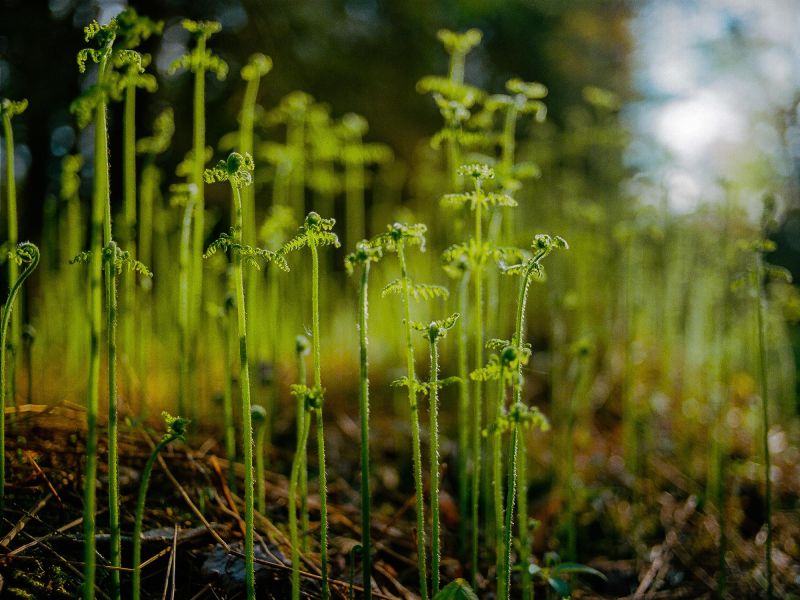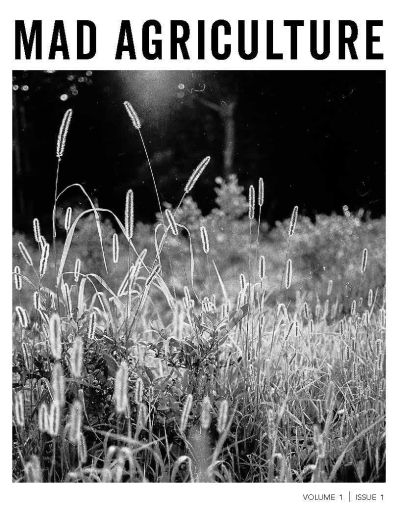
The Mad Agriculture Journal
Carbon Farming
Published on
June 01, 2019
Written by
Philip Taylor
Photos by
Jordan Perkins
A way of healing
Originally published by Loam Magazine
‘Carbon farming’ is a new term wet on the lips of everyone that cares for soil health and regenerative agriculture. When I first heard the term, I didn’t like it. We farm food, not carbon, right? However, once the term fermented a bit and I got over my apprehension of buzzwords, I’ve come to love the concept because it acknowledges the centrality of carbon in our lives and in producing food and fiber. Before I dig into carbon farming, let us consider our own place within the grand elemental cycle that we are part and parcel of. We are impossible without carbon. It’s quite literally the fabric of our lives. Our brains, hearts, sensations, perceptions and feelings are made of or mediated by carbon-based compounds. We are composed of 18.5% carbon. Like wings to birds, gills to a fish, marrow to bone, carbon is with us every step and breath we take.
We are also in constant exchange with the world. Your body replaces itself on average every 7 years. Involuntarily, the body rebuilds, replaces, restores, and lives in an elegant interplay with the planet. You are the carbon cycle lifted into song, outrageously beautiful and wild. The importance of carbon to life extends well beyond our own budgetary makeup. It is both material and energy, and it drives the economy of nature. The cycles of water and fertility equilibrate with the carbon cycle. One cannot imagine one without the other. There is no beginning or end – the cycles of life and emergence of complex ecosystems are so intimately wound together that no single lens of truth seeking can see the system as a whole. We need poetry, science, history, fiction, art and other disciplines to discover our place in the carbon cycle. A collective exploration is needed to clarify our inescapable bonds to nature. For me, such clarification begins with food.
Eating
Our primary engagement with the carbon cycle comes by eating. We eat at least three times a day, ingesting nature. Eating is how the Earth passes through you and ultimately how you pass through the Earth – you will eventually be unraveled by fungi and bacteria to become something else. Eating is how we move among elements. We live in carbon as we live in flesh and love and place. Eating defines how we depend on the Earth.
We are heterotrophs. Remember that 7th grade life science lesson? We cannot make our own energy. All food begins with energy from the sun. Autotrophs, like plants and algae, have the ability to convert light into chemical energy. They absorb carbon dioxide, and use it to build complex chemical architectures and elegant bodies that are packed with energy and nutrition – stored in carbon-to-carbon bonds.
When we eat, our bodies break these bonds, reducing them to simple organic compounds, liberating nutrients and harvesting energy, renewing and running the interworking of the body. With every breath you take, you are connecting the earth and atmosphere, entering a simple and profound cycle of return, converting the visible into the invisible, solid into gas, completing the conversion of animate to inanimate.
We are only but one node in the ecosystem. Not only does what we wear and eat determine our own health but also the health of the world. Food and fiber are the end result of an often very long chain of investments and interactions between people and the earth. When we consume, we pull on a vast web of global independencies, like roots hugging the earth. One must be careful in consumption, for it defines your interaction with the world by reinforcing an economic system that you may be conscious or unconscious of. It defines how you support justice or injustice, the enrichment or destruction of ecological and social systems.
Lately, humanity has not been feeding or clothing itself well. Billions of people are stuffed on unhealthy food while roughly a billion people are starved for basic nutrition. Our lack of self-care, as individuals and a global civilization, is mirrored in the ecosystems we depend on.
Hurting the Mother
Food production has caused soil erosion, dead zones in waterways, severe reductions in biodiversity, damage to soil health and climate change. The advent of agriculture began a divorce from the land that we have struggled to heal. The invention of the plow, which gave us dominion over forest and prairie, has ripped the skin of the Mother. These matters have been amplified by the Green Revolution and modern modes of industrial agriculture. The Earth is tender. It can take moments to destroy ecosystems that took thousands of years to develop: rainforests cut for wood, wetlands filled in for development, prairies plowed for grain. In Boulder County, where I dwell, I recently watched a single windstorm blow away a half inch of topsoil in a matter of minutes that took perhaps 100 years to create, reminiscent of the Dust Bowl.
The Earth is also resilient. Time and space are the only conditions needed to heal. Nature is regenerative and its drive for diversification and flourishing is vigorous and unending. With some breathing room, the ecological vibrancy of the world will restore.
While it is easy to see all of the ways we have hurt the Mother, we must imagine and create ways to enrich her. We have rent the ecological fabric of Earth. Now, how do we begin mending the bond?
LIFE IN THE CARBON CYCLE
Begin with story. It is critical that we create a new language to describe new and rediscovered truths as they arise and unfold before us. And while I’m happy that ‘carbon’ has entered the social lexicon, its remains objectified in ways that dehumanized our existence within the Earth system. Language for the carbon cycle feels young, foreign, and combative.
We demonize greenhouse gases, like carbon dioxide and methane, as if they are villains in the sky, brought on by tailpipes, smokestacks, fertilizers and fossil fuels. And while pollution is unhealthy, these gases are neither good nor bad; they just are. Our anger and frustration has manifested in words of combat:
We fight climate change, rather than heal the world.
We decarbonize rather than use contemporary sunlight for energy.
We go carbon negative rather than restore balance.
Until we make the solution joyous, exciting and the progenitor of true wealth, the climate movement will fail to galvanize people. Doom and gloom is a dying strategy. I prefer to see carbon as the most wondrous and fortuitous element for our sake – without which we would not exist. A much more powerful narrative is one of hope, gratitude and collective abundance.
Its high time for reconciliation with the Mother than sustains us. She welcomes us home, like the prodigal son, and does not fail to nourish. Regenerative agriculture is our pathway to planetary redemption. Regenerative agriculture focuses on reinvesting in the Earth to create healthy food and community. Carbon farming is a lens within the movement that treats carbon as the central element on which all agriculture depends, working with plants and soil to absorb and store atmospheric carbon in agricultural ecosystems.
Carbon plays the same role in soil as it does in our bodies – it’s the engine of life. Carbon Farm Planning is a holistic approach to use carbon-beneficial practices to create agroecosystems that are rich in soil health, diversity, resilience and productivity. At Mad Agriculture we help farmers and ranchers develop holistic carbon farm plans.Our approach is inspired by the collective work of Carbon Cycle Institute, Fibershed, and the Marin Carbon Project in California.
In the end, carbon farming yields much more than healthy soil, nutritious food and a stable climate. It creates true wealth, happiness and joy, which make the regenerative revolution irresistible. It fundamentally disrupts the industrial economy by shifting it from principles of extraction to regeneration, quality over quantity, diversity in place of monoculture, community instead of conquest, circularity over linear design, and invites us into a wholesale re-grounding of the economy in the virtues of stewardship, love and reciprocity. Carbon farming boldly reimagines how humanity belongs on Earth.
